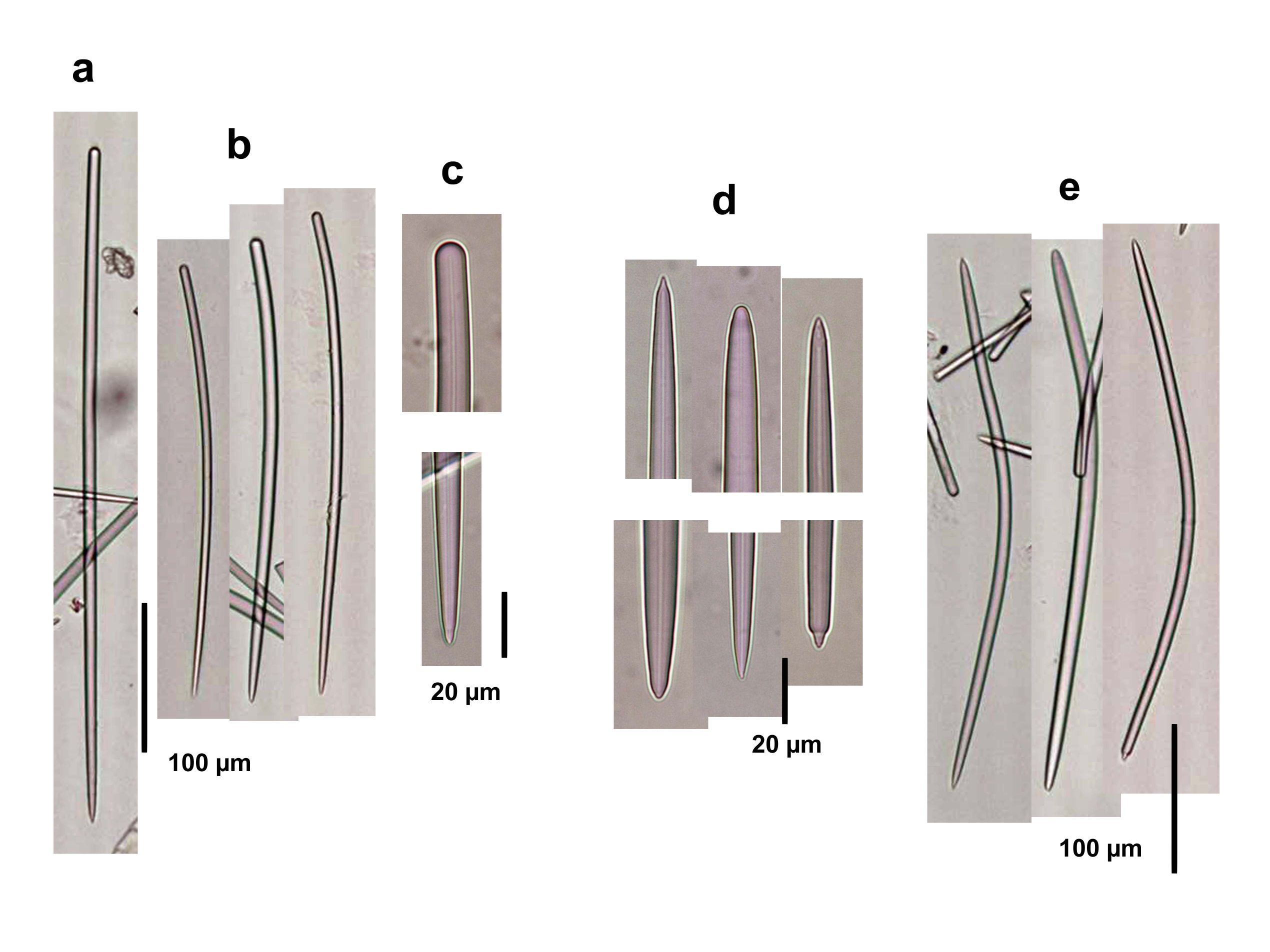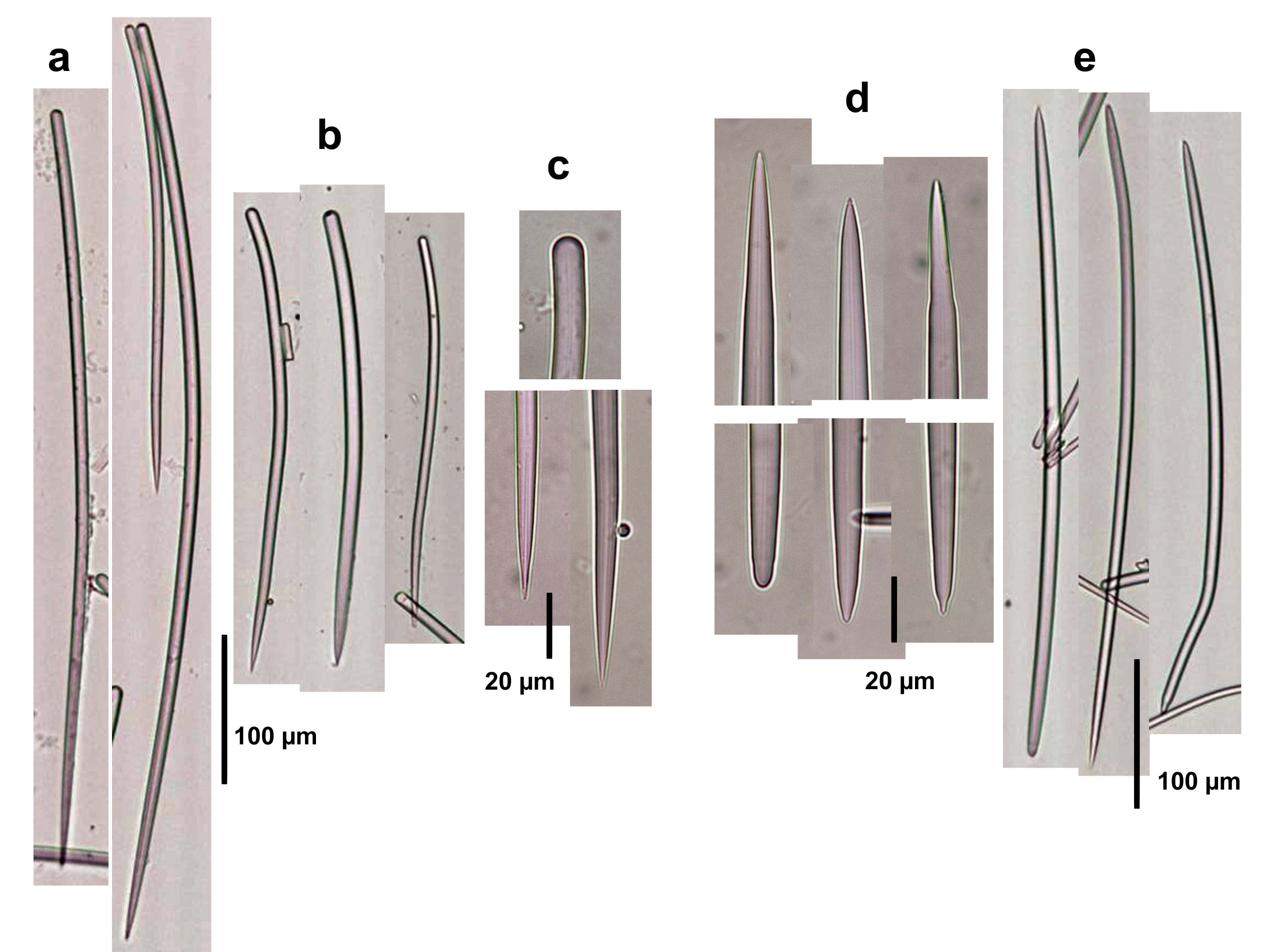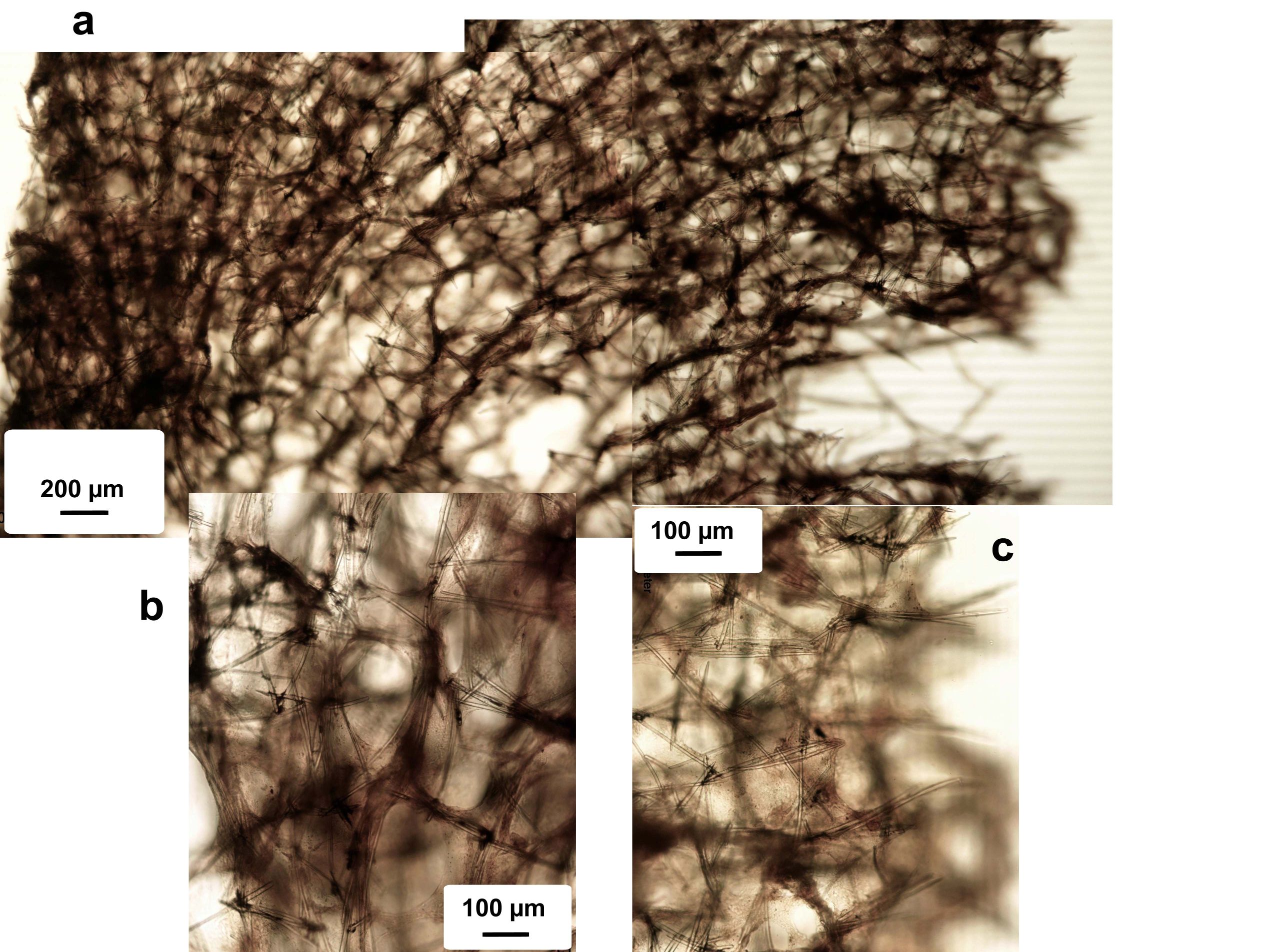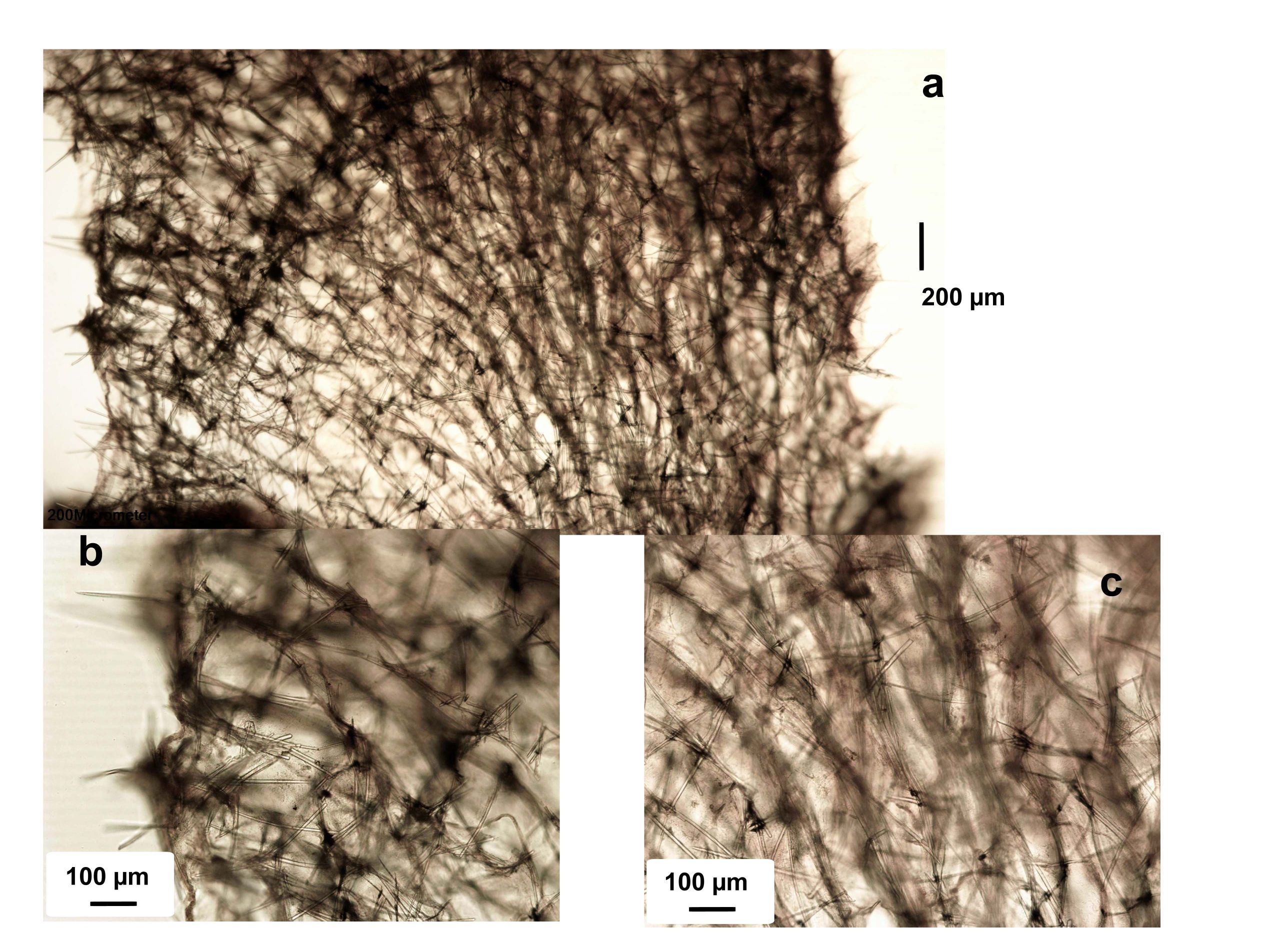the Sponge Guide - www.spongeguide.org
Observed Characteristics:
orange
bushy
tube
tough
Bahamas
Species Description and Notes
Description: Erect, stout, solitary or groups of cylindrical tubes with a strongly corrugated surface, up to about 5-8 cm tall and 3 cm thick. Tube wall thick; the base of the tubes is narrower than the body which also narrows towards the central atrial opening; concentric lines of oscules are seen inside wider atriums. Color orange, sometimes faded at the sides and bases. Consistency compressible, elastic. Skeleton as spicule tracts arising from the inner central portion of the tube and ascending and diverging radially towards both surfaces (less so towards the internal surface); tracts with 1 to 5 spicules, about 20-80 µm thick, embedded in variable amounts of spongin; irregularly interconnected by one to a few spicules, conforming an irregular reticulation with meshes 100-200 µm wide. Ascending tracts are more condensed toward center of the inner half of the tubes. The outer surface is hispidated by the terminal spicules of the ascending tracts. Spicules in two types: (1) curved styles, with the smooth heads and acute points, in two size categories, styles I, 220-340 µm long by 3.8-10.5 µm wide, the most abundant; and styles II, long and slender, but rather scarce, up to 565-640 µm long and 2.7-9.8 µm wide. (2) Slightly curved oxea with blunt to acute ends, often asymmetric, 380-510 µm long and 7.2-15.0 µm wide.
Notes: This is a deep reef species, living both cryptic and exposed. There are two slightly different morphs (single stout tubes and clusters of more slender tubes) in the material included in this species. The sample of groups of tubes has a coarser skeletal reticulation with more spongin than the sample of coarser tubes. From their tubular form, we have decided to maintain them together until further analyses can be made. This species does not fit the definition of tubular genera of the family Axinellidae (i.e. Auletta Schmidt, 1870; Pipestela Alvarez et al., 1998), but instead has the typical spicule complement and skeletal architecture of the genus Axinella Schmidt, 1862, which so far does not have tubular species, at least in the Western Atlantic (see Alvarez et al., 1998). Together with Axinella sp.-"orange-yellow velvety tubes", pictured in this guide, they are probably still undescribed. In the latter species the tubes are longer and smooth and the color is predominantly orange-yellow, and the style I heads can be thickened or have a subterminal ring. It is noticeable the similarity in spiculation and skeletal architecture with other bushy, subtubular (folded branch) or ramose species also pictured here such as Axinella corrugata (George & Wilson, 1919), Axinella ?digitiformis Lehnert & van Soest, 1996, and Axinella ?pomponiae. All have two categories of styles, one quite long (and scarcer than the other), and oxeas, longer than the smaller styles. Initially we thought they were variations of Axinella corrugata, but later decided to maintain them separated by the external shape until further morphological and molecular comparisons can be carried out.
Molecular studies have found that the genus Axinella is polyphyletic, with members spread throughout several families and even orders of Demospongiae (Alvarez et al., 2000; Gazave et al., 2010; Morrow et al., 2012; Redmond et al., 2013). We have decided to maintain the name Axinella for this species until further studies show to which group it belongs.
Tissue and Spicule Images

Spicule Images: a) Styles II; b) styles I; c) ends of styles I; d) ends of oxea; e) oxea. Sample from the Bahamas.
Source Specimen: http://www.spongeguide.org/ thumbs/00024/01007.JPG

Spicule Images: a) Styles II; b) styles I; c) ends of styles I; d) ends of oxea; e) oxea. Sample from the Bahamas.
Source Specimen: http://www.spongeguide.org/ thumbs/00050/01463.JPG

Tissue Images: a) Longitudinal section of the body (external surface on the right); b) magnification of the choanosome; c) magnification at the surface. Sample from the Bahamas.
Source Specimen: http://www.spongeguide.org/ thumbs/00024/01007.JPG

Tissue Images: a) Longitudinal section of a tube (external surface on the left); b) magnification at the surface; c) magnification of the choanosome. Sample from the Bahamas.
Source Specimen: http://www.spongeguide.org/ thumbs/00050/01463.JPG
Images
Axinella sp.-"orange corrugated tubes"
Location: Bahamas, Little San Salvador
Photographer: Sven Zea
Location: Bahamas, Goulding Cay, New Providence
Photographer: Sven Zea
Location: Bahamas, Goulding Cay, New Providence
Photographer: Sven Zea